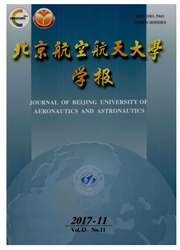

 中文摘要:
中文摘要:
为了克服手臂上的安装电机由于自重对拟人臂机器人承载能力和运动灵活性造成的影响,基于最新人臂仿生和并联机器人研究的成果,提出了一种用线驱动的并联机构替代手臂的肩、腕关节的串并联结构,并将驱动电机安放在基座上.讨论了从各个关节到基座的驱动绳索的走线方式及关节之间的耦合情况,在此基础上对前向运动学进行了分析,给出了末端相对于基础坐标系的位姿态正解.由给出的两组数值解实例,在ADAMS环境下进行了仿真,验证了算法的正确性.
 英文摘要:
英文摘要:
In order to overcome the intluence of bad load-beanng capacity and the movement flexibility by the actuators installed on the humanoid-arm, a series-parallel mechanism based on the latest theories of humanoid-arm bionics and research results of the parallel robots was proposed. The shoulder and wrist joints with a cable-driven parallel mechanism were replaced, and the motors were installed on the base. The cable-distribution from the base to the corresponding joint and the coupling instances among 3 joints were discussed. Furthermore, the forward kinematics to deduce the pose and position of the end effector respective to the base coordinate were analyzed. A simulation by means of ADAMS was carried out for two group numerical solutions to verify the effectiveness of proposed algorithm.
 同期刊论文项目
同期刊论文项目
 同项目期刊论文
同项目期刊论文
 期刊信息
期刊信息
